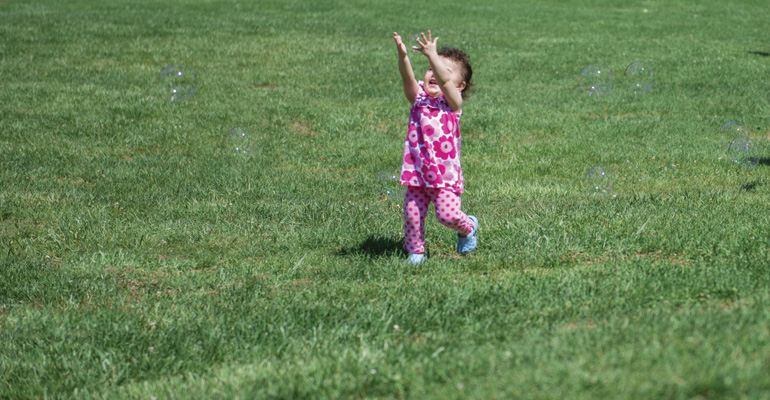Three days after Madison’s birth, I watched my husband buckle her into the car seat. I thought about her birth mother, Jessica, whom we’d left sobbing in the maternity ward. I knew she was aching for her baby, the baby who was now ours.
“She’s beautiful,” I said to my husband. He glanced into the rearview mirror. “I know,” he said. We sped through the gray morning, heading home.
“I feel like a kidnapper,” I told him.
“I know,” he said.
Meeting Jessica
My husband and I came to open adoption with hopeful naiveté. We knew we would be sharing our vital statistics — first names, ages, religion, carefully chosen pictures — with birth mothers. But we wanted more. We wanted holiday visits, regular phone calls, and contact with the extended birth family.
Our agency asked each prospective family to put together a profile. It should contain information about us, our path to adoption, and our intentions as parents. And it should be printed on pretty paper.
“Pretty paper?” I asked our social worker.
“It matters,” she said. “You’d be surprised.”
It was a lot of pressure to take to the stationery store. I rejected the paper with pastel baby feet as too pushy, the sky and clouds as too ethereal. I finally decided on white with a tasteful green border. We made copies and dropped them off at the agency.
As we waited, we weathered the fear-mongering of friends and family. They wondered aloud what woman could walk away from her baby and then come back for visits. “Won’t you feel jealous?” they asked. “Won’t it confuse the child?” I dismissed their concerns with the blind optimism of someone who had gone through years of infertility hoping for a second child and now finally thought she might get one.
Seven months after completing our homestudy, our social worker called. Jessica was 19, she told us, and African-American. The birth father, who chose not to be involved, was white, like us. Our agency arranged a meeting at a downtown restaurant.
I liked Jessica right away. I liked her confidence and sense of humor. I liked her wide smile. And I liked her directness. “I’m going to name the baby Madison,” she told us. “You can change it later, but that’s the name I’m going to give her.”
Over the next few weeks, she and I talked often about Madison, about politics, music, Jessica’s plans to travel and go to school. One day I hung up the phone after a lengthy conversation and turned to my husband. “If Jessica decides not to place Madison,” I said, “she’ll be a good mother.”
We talked about the adoption, too, and why she chose us to be part of it. “You have a son,” she said. “I liked knowing Madison would have a brother. I also liked what you said about including me. And the paper. I liked your paper. It was tasteful.”
At our first meeting, Jessica had told us that she would want to be alone with Madison for the three days before she could sign the papers. On the morning that Madison was born, she called to say she had changed her mind. “I need to see you with her,” she said simply.
Becoming a Mother
Even after we arrived home, I couldn’t forget Jessica’s tears. This was not the gauzy, soft-focus motherhood I’d envisioned. Jessica was everywhere because she was in my daughter — in the shape of her brown eyes, the curve of her face. During diaper changes, I’d gaze at Madison’s body and imagine how Jessica might have looked at one week old.
I sang to Madison, so she would learn my voice. I strapped her to me and walked in circles, so she would learn the rhythm of my movements. But I felt like a fraud when people said what a pretty baby I had. Not my baby, I wanted to tell them, anxious not to take Jessica’s credit. Even Madison’s birth certificate listed me as the woman who had given birth to her. But I didn’t want to pretend that Madison came to us without her own history.
A friend took me to task. “You keep telling me how strong and smart Jessica is, but you’re second-guessing her,” she said. “Stop denigrating her decision.”
I had pictured Jessica and myself balanced on a scale. If one of us were the real mother, the other was not. If one of us were happy, the other must be sad. Now I realized that I couldn’t ease Jessica’s struggle by taking it on as my own. Besides, that’s not what Jessica would have wanted, sorrow to color the first months of Madison’s life.
Sharing Madison
Sometimes I don’t want to share Madison. Sometimes I feel that I am the only mother she has and will ever need. But then I think how much easier it will be for our daughter, to never have to search for her roots.
Last summer Jessica and I took a trip to Washington, so Madison could meet her extended birth family. Jessica wanted to show them that her decision to place Madison with us was a good one. They weren’t grieved by the transracial aspect, but by the loss of this wondrous first grandchild to strangers.
The reunion took place at a country club on a beautiful, cool evening. Madison, open and sunny, charmed everyone. “She looks like her mother,” said someone admiringly, and the comment hung in the room. “Yes, she does,” I rushed to say. “She has Jessica’s beautiful smile.”
They were generous with me, too. “Better ask your mommy,” said Jessica’s father when Madison reached for another slice of cake. Then he handed her to me, although I know it pained him.
When the party spilled outdoors, Madison and Jessica wandered away to play in one of the sand traps on the club’s golf course. I stood on the edge and snapped a series of pictures — first, Madison and Jessica crouching together to poke at the sand. Then Madison with her head thrown back to look up at Jessica, while Jessica smiled at her with great tenderness. Then a shot of Madison, laughing and running away. Running toward me.
This article first appeared on salon.com. An online version remains in the Salon archives. Reprinted with permission.



